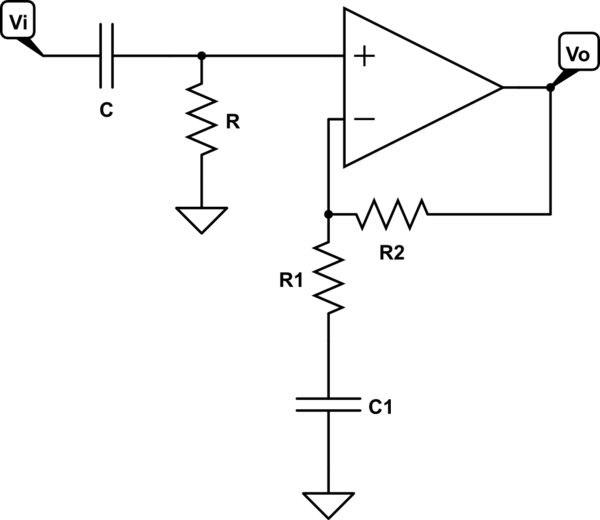Regarding the chosen answer for: https://electronics.stackexchange.com/questions/26979/how-does-this-op-amp-non-inverting-amplifier-work
The following circuit is given, and it says that $$F_c = \frac{1}{2\pi R_1C_1}$$
<!-- Begin schematic: In order to preserve an editable schematic, please
don't edit this section directly.
Click the "edit" link below the image in the preview instead. -->

<!-- End schematic -->
However, this doesn't seem right to me, even though I have found the same example and formula elsewhere on the web (e.g., "Non-inverting amplifier – alternative" at [http://stompville.co.uk/?p=470][2]).
To me it doesn't take into account the value of the op amp feedback resistor (\$R_2\$ in the sketch above).
Would the cut-off frequency not be based upon (\$R_1+R_2\$)? If not, why not?
My point is that the only way the capacitor can charge or discharge is through the output of the op-amp, so surely the feedback resistor is also critical?
[1]: https://i.sstatic.net/qtbji.png
[2]: http://stompville.co.uk/?p=470